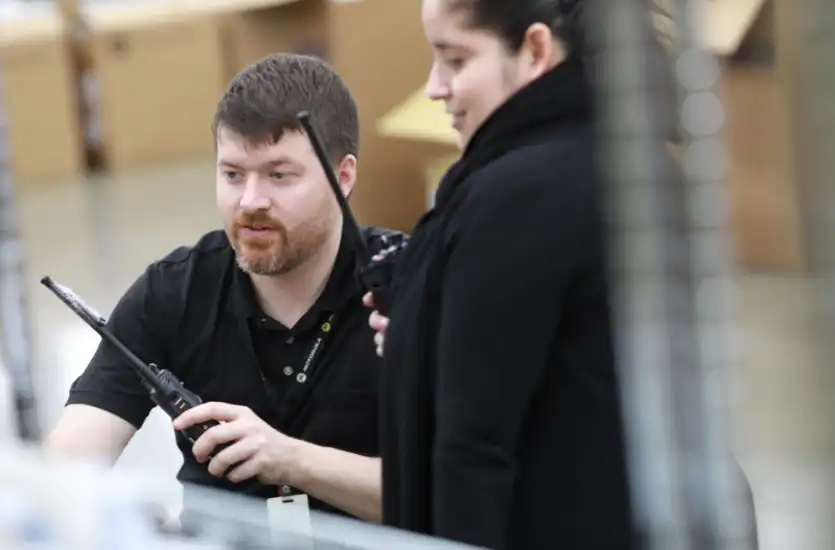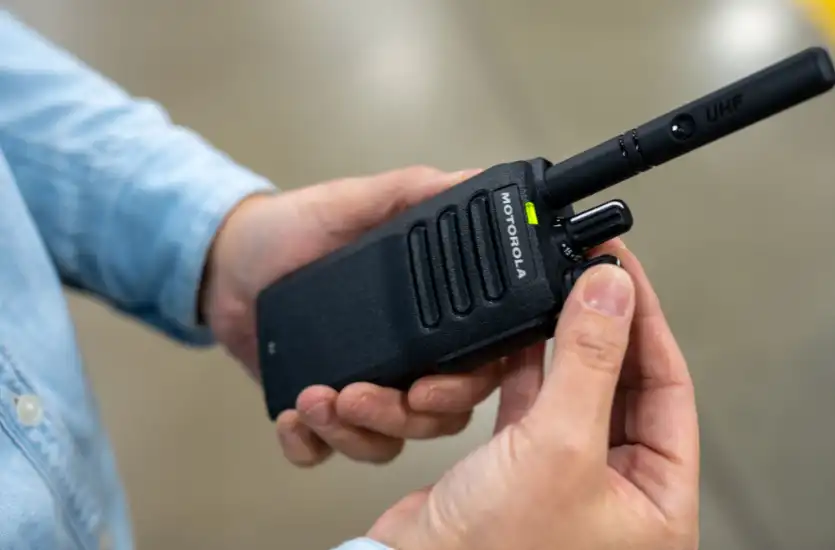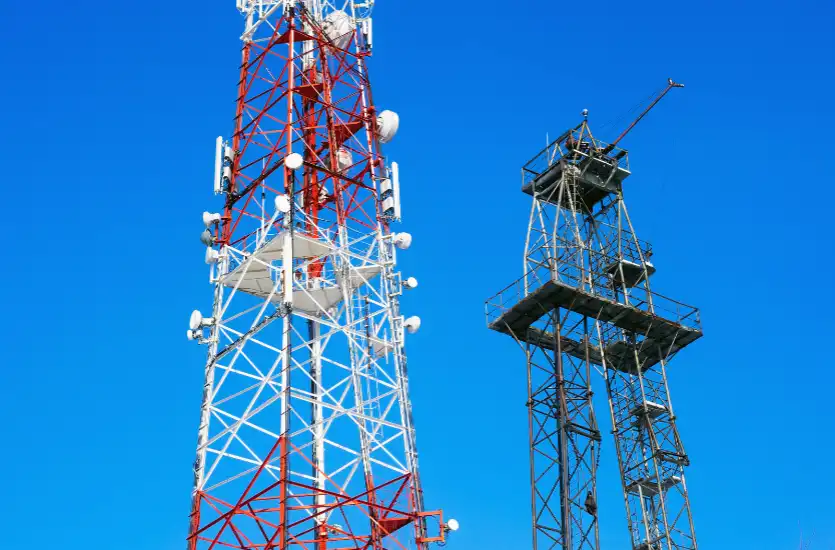You’re on a job site or coordinating across a sprawling event venue, and communication is flowing easily—until it isn’t. Suddenly, the message is garbled, or worse, it doesn’t go through at all. When it comes to two-way radios, the difference between a clear signal and a frustrating interruption often comes down to power levels.
With two-way radios, wattage plays a big role in determining how far your signal can travel and how long your device will keep running on a single charge. It’s not just about cranking up the power for maximum range—it’s about knowing when and where to adjust for better results.
This article unpacks the ins and outs of power levels in two-way radios, exploring how they impact range, battery life, and performance in different settings. Whether you’re managing communications for a team, a business, or an emergency, understanding wattage can help make sure your equipment works the way you need it to.
What Are Power Levels in Two-Way Radios?
We all know that common phrase—“bigger is better.” And in many cases, that’s absolutely true. But with two-way radios, it’s all about finding the right balance without going overboard. Power levels, measured in watts, play a big-time role in how these devices perform, and knowing what wattage does can make a big difference in choosing the right radio for your needs.
Wattage refers to the amount of power a radio uses to transmit its signal. Handheld radios typically operate within the 1-5 watt range, which is perfect for on-the-go communication in smaller areas or when you’re working indoors. On the other hand, mobile radios—those installed in vehicles or used as base stations—can transmit at much higher wattages, sometimes up to 100 watts, making them a good choice for long-distance communication across open terrain.
The wattage of a radio affects several aspects of performance. Higher wattage allows a signal to travel farther, which is important when communicating across large areas. It also strengthens the signal, helping it push through obstacles like walls or trees that might otherwise weaken it. Additionally, higher wattage can help reduce interference from other devices or environmental factors, resulting in a clearer connection. However, higher power comes with trade-offs, such as faster battery drain for handheld radios, making it important to balance performance with power consumption based on your specific use case.
How Power Levels Affect Radio Range
Think about the difference between a high-performance sports car and a compact, fuel-efficient sedan. Both will get you where you need to go, but the sports car’s engine packs far more horsepower, allowing it to accelerate faster and easily cover long distances (abiding by the law, of course). Comparatively, the sedan is perfect for shorter trips around town, using less power to do the job efficiently. Just as a vehicle’s performance is influenced by horsepower—measured in kilowatts or brake horsepower—two-way radios rely on wattage to determine their communication range and signal strength.
As we shared earlier, wattage represents the power output used to transmit a signal for two-way radios. Higher wattage acts like the powerful engine of a sports car, enabling the signal to travel greater distances and cut through interference like walls, trees, or even hills. This means a higher-watt radio can be a game-changer in wide-open spaces, rural areas, or remote job sites where staying connected over long distances is non-negotiable.
However, just like a high-performance vehicle consumes more fuel, higher wattage drains a radio’s battery faster. Low-power settings are often the smarter choice for indoor use, urban environments, or scenarios where only a short communication range is needed. For instance, a retail store employee or warehouse worker communicating with nearby team members won’t need the extended range of high wattage and can conserve battery life by using less power.
Industries like construction, law enforcement, fire and emergency medical services, and transportation often rely on high-watt radios to maintain communication over sprawling job sites, highways, or during emergency response situations. Meanwhile, event coordination or hospitality teams typically benefit from low-watt radios, which are more efficient for close-range communication without unnecessary power consumption.

The Impact of Power Levels on Battery Life
We’ve all seen it in movies—the flashlight dies just as the characters enter a dark and creepy place. It’s predictable, it’s frustrating, and somehow, it feels all too familiar when it happens in real life. Now imagine this happening during a super important moment on the job: your two-way radio battery dies right when you need to make a call. While it’s not quite the same as a horror movie, it can create a stressful situation that could have been avoided with better power management.
The higher the wattage your radio uses, the faster it drains the battery. While high-power settings give you extended range and stronger signals, they come at the cost of shorter operating times. This creates a trade-off: do you prioritize range, or do you manage power to keep your device running longer?
Balancing power levels with battery life requires planning and strategy. Here are some best practices to help you make the most of your two-way radios:
- Switch to low-power mode when close-range communication is sufficient, such as working in the same building or within a small area.
- Carry spare batteries to stay prepared for long shifts or high-power usage scenarios. Rechargeable battery packs can also be a lifesaver for mobile radios.
- Use external power sources for mobile or base radios during extended operations.
By making thoughtful adjustments based on the situation, you can avoid those frustrating moments when your radio powers down at exactly the wrong time. With a little preparation, your equipment will always be ready to keep the conversation going.
High-Power vs. Low-Power: When to Use Each
We’ve touched on this already, but let’s break it down further so you can decide when high-power or low-power settings make the most sense for your two-way radios. Each setting has unique benefits depending on the situation, and understanding these differences can help improve communication efficiency in any environment.
Benefits of High-Power Settings
- Overcomes interference and obstacles like hills, dense foliage, or building materials that weaken signals.
- Ideal for long-distance communication, such as covering large outdoor worksites or remote areas.
- Essential during emergencies when maintaining contact is non-negotiable, like search-and-rescue operations or natural disaster responses.
Example: Construction teams on multi-acre projects or public safety officers coordinating across rural highways benefit from high-power radios to stay connected despite distance or terrain.
Advantages of Low-Power Settings
- Conserves battery life, keeping radios operational for longer periods.
- Prevents unnecessary signal reach, limiting the risk of interfering with other radio users.
- Reduces interference in crowded environments, making it ideal for locations with many overlapping radio frequencies.
Example: Event staff managing a large venue or hotel teams operating indoors often rely on low-power settings to avoid interruptions and maximize efficiency.
Beyond Power: Why Receiver Performance Matters
When it comes to effective communication with two-way radios, there’s more to consider than just transmission (Tx) power. While power levels play an important role in determining range and signal strength, focusing solely on wattage can overlook other critical factors that set quality radios apart. We already discussed the nuances of power levels and trade-offs. But let’s also mention that Receiver Sensitivity and Selectivity play a significant part in differentiating quality radios from the rest.
Many manufacturers market radios with higher power levels—8 watts, 10 watts, and beyond—at competitive prices. At first glance, these numbers seem impressive, but they don’t tell the whole story. Communication is a two-way street, and the ability to receive a signal clearly is just as important as the ability to transmit it. Quality radios offer superior Receiver Sensitivity and Selectivity.
- Receiver Sensitivity refers to the radio’s ability to detect weak incoming signals. Think of it as having sharp hearing—even in a noisy environment, you can pick up a faint sound. A sensitive receiver ensures clear communication even at the edges of a radio’s range.
- Receiver Selectivity is the ability to focus on the right signal while filtering out interference from other nearby frequencies. Imagine trying to have a conversation at a rock concert. A high level of selectivity is like having noise-canceling headphones that let you hear the person next to you despite the chaos around you.
These features are particularly critical in challenging environments, such as densely populated urban areas or remote locations with multiple overlapping signals. While higher Tx power may help push a signal through, it’s the receiver’s ability to hear and decode the message that ensures successful communication.

Tips for Optimizing Radio Performance
Getting the most out of your two-way radios doesn’t have to be complicated. With a little know-how and a few smart strategies, you can maximize their efficiency while keeping communication clear and reliable.
Choose the Right Wattage for the Job
Think about where and how you’ll be using your radios. Remember, for outdoor or remote environments where range is a priority, higher wattage makes sense. But for indoor use or close communication, lower wattage can save battery life without sacrificing quality.
Stay on Top of Maintenance
A well-maintained radio is a dependable radio. Regularly check the antenna to make sure it’s securely attached and free of damage—this alone can improve signal strength. Keep your firmware up to date, as manufacturers often release updates that refine performance and address common issues.
Leverage Repeaters and Base Stations
Instead of cranking up the power on all your radios, consider using a repeater or base station to extend range across larger areas. These tools amplify your signal without putting extra strain on your radio’s battery.
Make Use of Advanced Features
Modern radios come with features designed to improve usability. Dynamic power adjustment, for example, automatically adjusts wattage based on distance, so you’re not using more power than needed. Programmable channels also allow you to customize settings for specific teams or tasks, simplifying communication.
Contact EMCI Wireless for the Right Two-Way Radios For Your Business Needs
We might laugh at how flashlights always fail in horror movies, but in real life, losing communication at the wrong moment is no joke. Choosing the right power levels for your two-way radios can mean the difference between flawless coordination and unnecessary headaches—it can even mean the difference between life and death. Whether you need long-range communication for remote worksites or battery-saving solutions for indoor operations, evaluating your needs is the first step.
At EMCI Wireless, we’re here to help you make those decisions. As a proud Motorola channel partner, we offer a wide range of reliable two-way radios and expert guidance to suit your unique requirements. Serving central and southern Florida, including Davie, Lauderhill, Sarasota, and more, we’re your trusted partner for all things communication.
Contact us today to find the right solutions for your team.






